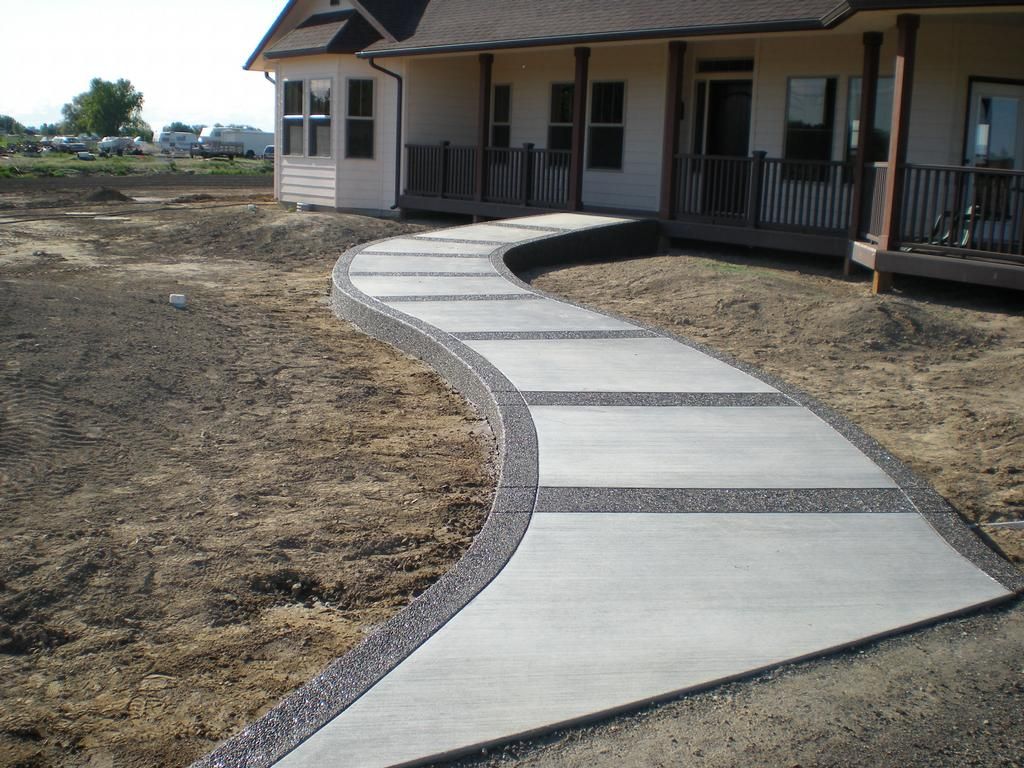How To Use Concrete For Sidewalks In Del Mar?
 Concrete sidewalks are a popular choice for enhancing the functionality and aesthetics of outdoor spaces. Whether you’re a homeowner looking to improve your property or a contractor working on a project, using concrete for sidewalks can provide durability and a clean, polished appearance. To ensure a successful concrete sidewalk project, consider these seven essential tips.
Concrete sidewalks are a popular choice for enhancing the functionality and aesthetics of outdoor spaces. Whether you’re a homeowner looking to improve your property or a contractor working on a project, using concrete for sidewalks can provide durability and a clean, polished appearance. To ensure a successful concrete sidewalk project, consider these seven essential tips.
- The first step in any successful sidewalk project is careful planning and design. Consider the purpose of the sidewalk, its location, and how it will integrate with the overall landscape. Proper measurements and layout are crucial to ensure the sidewalk fits seamlessly into the space.
- Selecting the appropriate concrete mix is essential for sidewalk longevity. A high-quality mix with the right proportion of cement, aggregates, and water is crucial. The mix should also include additives to enhance strength and durability. Consult with a concrete supplier or contractor to determine the best mix for your specific project.
- Before pouring concrete, proper site preparation is essential. Clear the area of any debris, roots, or other obstacles. Ensure the ground is level and adequately compacted to prevent settling or cracking in the future. Adequate base preparation is critical for long-term stability.
- To strengthen your concrete sidewalk, consider using reinforcement materials such as rebar or mesh. This helps distribute the load and minimize the risk of cracks. Install the reinforcement grid within the concrete formwork before pouring the mix.
- Achieving a smooth, even finish is crucial for a visually appealing sidewalk. Employ good finishing techniques, such as screeding, floating, and edging, to create a polished surface. Proper finishing also helps improve the concrete’s resistance to wear and tear.
- Curing is the process of maintaining the right moisture and temperature conditions for the concrete to set properly. Proper curing is vital for preventing cracks and ensuring the concrete’s strength. Cover the freshly poured sidewalk with curing blankets or plastic sheeting and keep it moist for at least seven days.
- Once your concrete sidewalk is in place, ongoing maintenance is essential. Periodic sealing can help protect the surface from stains, moisture infiltration, and the effects of freeze-thaw cycles. Regular cleaning and repairs are also necessary to extend the sidewalk’s lifespan.
FAQs
How Long Does It Take For Concrete Sidewalks To Cure Completely?
Concrete sidewalks typically require at least seven days of curing to reach sufficient strength. However, full curing can take up to 28 days. During this time, it’s crucial to keep the concrete moist and protect it from extreme temperature fluctuations.
Can I Add Color Or Texture To My Concrete Sidewalk?
Yes, you can enhance the appearance of your concrete sidewalk by adding color or texture. This can be achieved through techniques like integral coloring, stamped patterns, or concrete stains. These options allow you to customize the look of your sidewalk to complement your landscaping or architectural style.
What Can I Do To Prevent Cracks In My Concrete Sidewalk?
To minimize the risk of cracks, ensure proper site preparation, use reinforcement materials like rebar or mesh, and follow recommended curing practices. Additionally, consider expansion joints or control joints to accommodate concrete’s natural tendency to expand and contract with temperature changes.
Conclusion
Concrete sidewalks offer a durable and aesthetically pleasing solution for enhancing outdoor spaces. By following these seven tips, you can ensure a successful project that results in a long-lasting and attractive sidewalk. Proper planning, material selection, site preparation, reinforcement, finishing techniques, curing, and ongoing maintenance are all key factors in achieving a high-quality concrete sidewalk that will serve you well for years to come. For more information, contact Concrete Contractor Del Mar at (858) 314-3534.